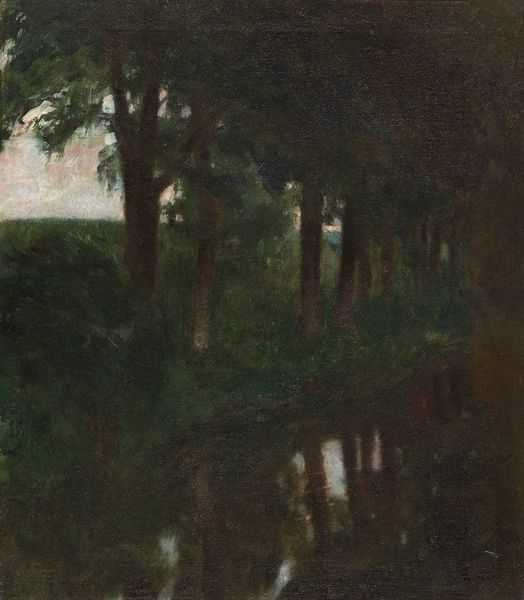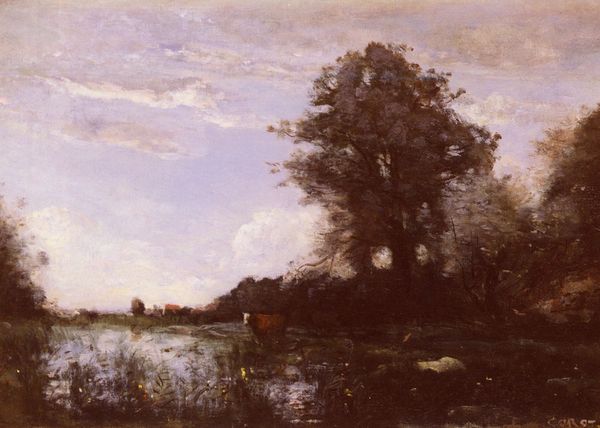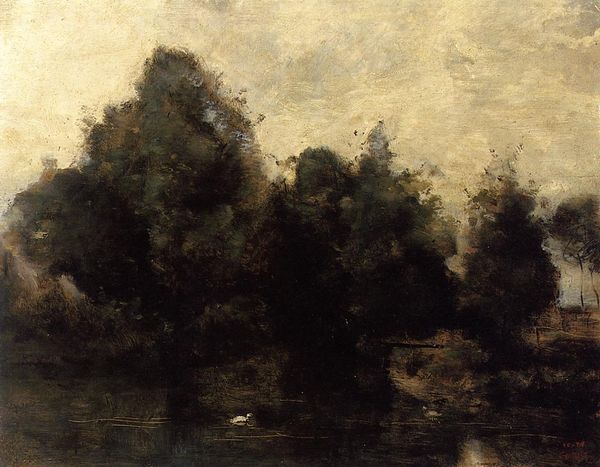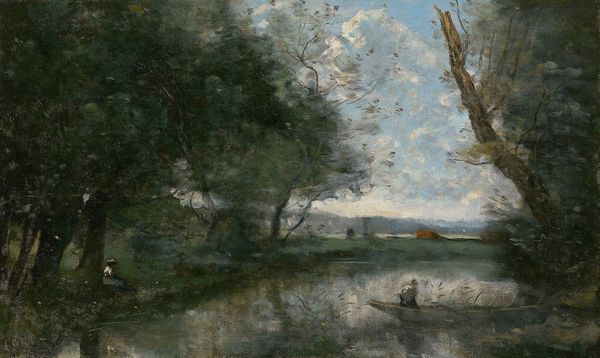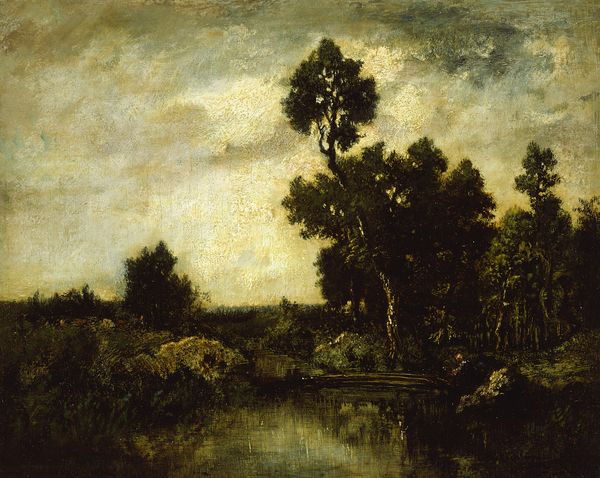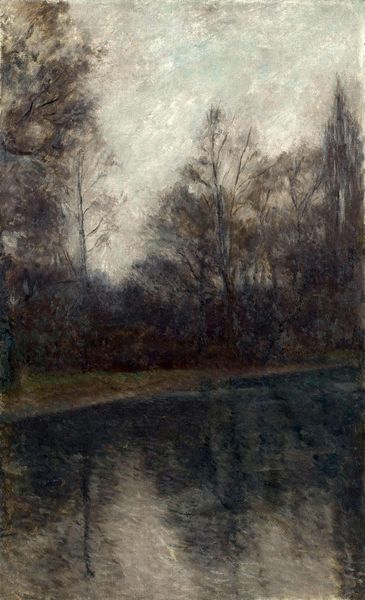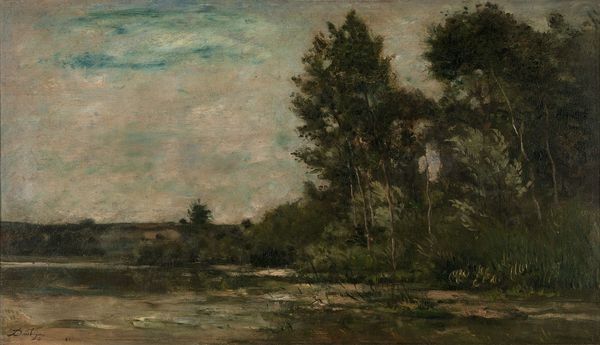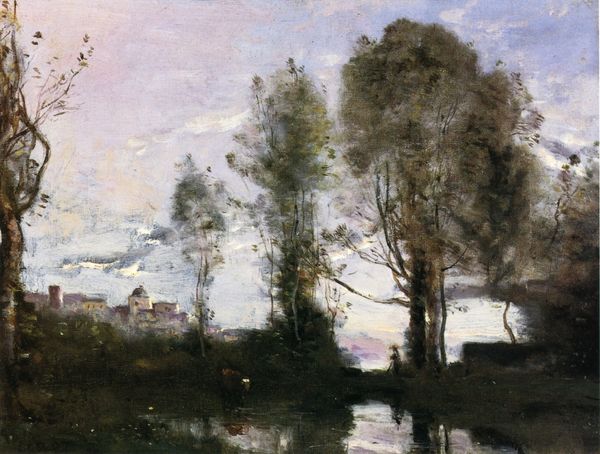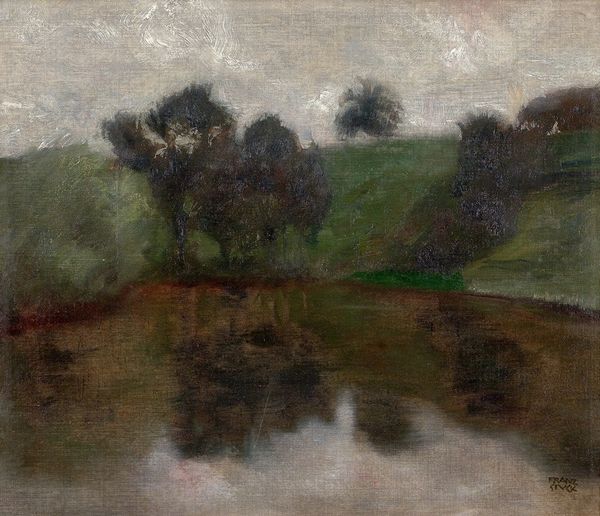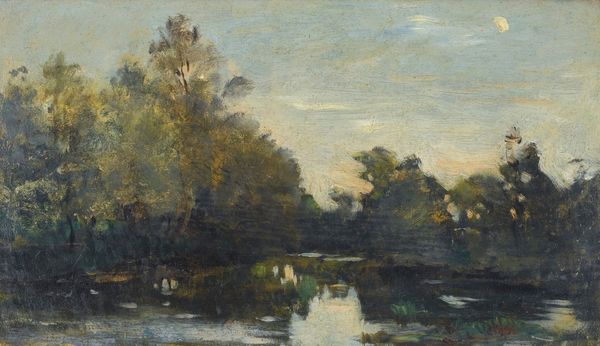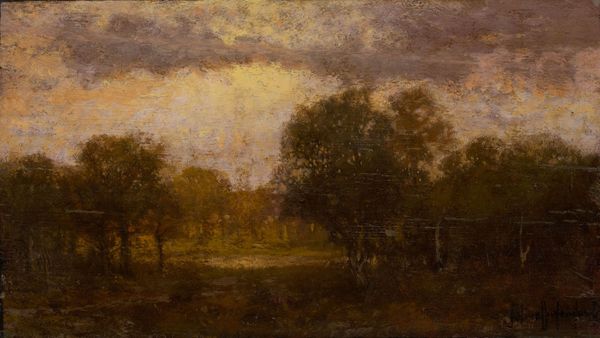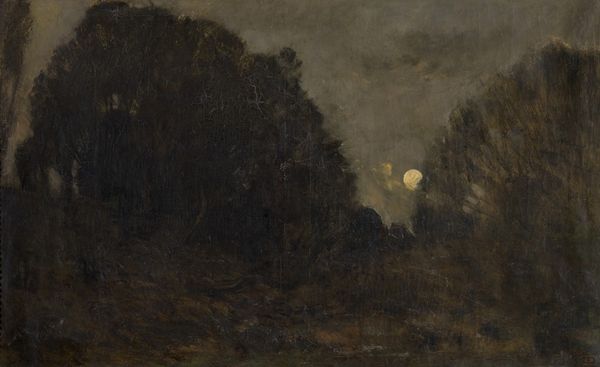
Dimensions: 25 1/2 x 36 1/2 in. (64.77 x 92.71 cm)
Copyright: Public Domain
Editor: This is "Moonlight Scene with House," a charcoal drawing from around 1890 by Gabriel Villard. The mood is just so evocative...it's quiet, maybe a little melancholic. What symbols do you see at play here? Curator: The glowing window is a key symbol. Windows often represent the threshold between our inner world and the outer world. Light emanating suggests warmth, safety, domesticity—the hearth as the heart of the home. Consider what might this symbolize, against the vast dark expanse around it. Editor: Almost like a beacon? A promise of something? Curator: Precisely. The darkness itself carries weight. Night landscapes often reflect hidden aspects of the psyche—fears, dreams, the unconscious. In this period, many artists used landscape to represent interior, psychological states. Do you see elements of that here? Editor: Absolutely. The darkness definitely feels more psychological than literal. Is the single light perhaps more poignant due to the surrounding gloom? Curator: Indeed! Light and dark become potent symbols when contrasted. The viewer's eye is drawn specifically to this bright point against so much dark. What might that small point of brightness signify in relation to collective understanding and history? Editor: I hadn’t thought about that. So it becomes a symbol of hope or endurance against historical forces. Curator: Or perhaps simply the quiet resilience of the human spirit, tucked away in the vastness of existence. It’s an open question. What are you taking away? Editor: How even the simplest scenes become vessels for really powerful shared meanings over time. Curator: Visual literacy lets us recognize those connections. And that’s how images truly come alive.
Comments
No comments
Be the first to comment and join the conversation on the ultimate creative platform.
